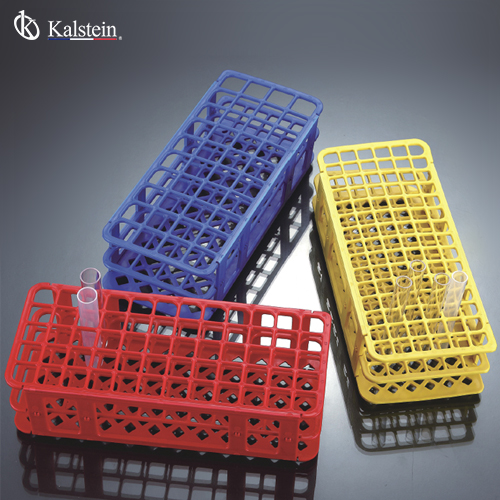When it comes to the conduction of experiments, scientists and lab operators tend to use many different tools, with different functions and complexity, but with the same importance in the scientific research or study. Having the right support for your test tubes becomes a key factor when conducting any kind of testing or analysis in your laboratory.
Racks are laboratory equipment to hold multiple tubes, instruments and other devices in order to have them organized and in the same place so that is easier to access them when performing an experiment or a research. These storage devices are very common for tube’s storage, especially when you are working with different solutions at the same time. Another one of their uses is to ease the transportation of multiple tubes at the same time in your laboratory.
Among the most common items you will find in any biology laboratory are test tubes. They are a piece of clear plastic tube open at the top and closed at the bottom. They are very common in biology related sciences for handling and culturing all kinds of live organisms, such as molds, bacteria, seedlings, plant cuttings, etc. Despite test tubes have a very basic structure; they are useful in many different fields in science. They have a wide range of uses inside your laboratory. Tube racks are very important items in your laboratory to keep everything in order.
Medical racks
These storage devices come in a variety of size, composition, material and color. You can use racks to autoclave test tubes, to place samples and instruments inside a refrigerator, or to simply organize your laboratory. The most common rack models are metal wires, but you can also have them in polystyrene, foam, fiberglass and polypropylene. This material has great features and advantages when it comes to high temperature levels and the different types of solutions and specimens this material can handle. Polypropylene is a thermoplastic polymer resistant to many chemical solvents, bases and acids. This material is a good choice to maintain those types of liquids. Moreover, polypropylene’s melting point is 130 degrees Celsius.
You can find a wide variety of racks in any kind of laboratories, because of their importance for organization and storage, key factors in a lab. Without order, experiments, tests and researches can get messy and that will certainly will not give you positive results.
- Classic rack: These models are normally found in any regular laboratory and are made of wood, stainless steel, or plastic. It generally has 8 holes, 10 holes, or 12 holes to keep test tubes.
- Interlocking cube form: This is one of the most practical organization racks. It comes with several cubes of racks that are detachable and twist-able based on the side that is needed for use. Each cube can hold one size of test tubes but each of the four sides of the cube holds the tubes in various arrangements that can be adjusted for use accordingly. These racks cannot only be used for test tubes, but it can also be used to hold culture tubes, centrifuge tubes, and micro-centrifuge tubes. The interlocking cube racks can also be put in the autoclave, as well as ease the transport of multiple different sized tubes.
- Stackable rack: These are polypropylene racks and they can be placed in the autoclave as well. These racks appear as the classic test tube racks but they can be disassembled to ease the storage of both the racks and the test tubes.
- Test tube drying rack: Drying Racks can be used for various purposes, including drying and holding chromatography plates, as well as drying test tubes by placing them in an inverted position in the pegs.
- Slant rack: They are used to hold the slants at the degree it is required to be placed in to be dried after the media has been inserted into the tube.
You can find different kinds of racks in our catalog. HERE

